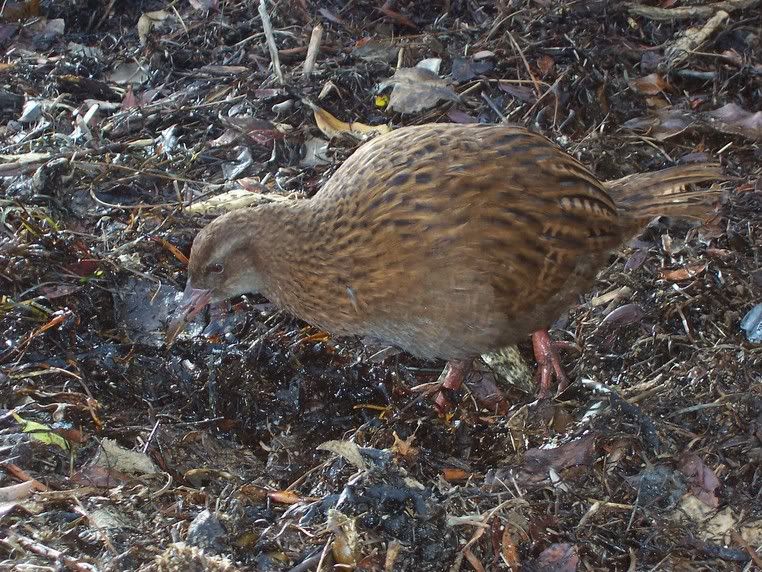The weka - a flightless kiwi-type bird found only in Southern NZ
Take a look at a map of New Zealand - most people know there are two main islands, North and South. But if you look at the bottom of the South Island you'll see another, tucked away like an afterthought. This is Stewart Island, probably the most southerly point I'll ever reach. The maori legend has it that the demigod Maui caught a huge fish from his canoe using a bone hook baited with blood from his own nose. This fish - Te Ika a Maui (the fish of Maui) - became the North Island of New Zealand. His canoe - Te Waka o Maui - became the South Island, and Stewart Island was the anchor that held his canoe in place.
Stewart Island is roughly triangular in shape and is 65km by 40km wide. 85% of the island is national park, and thanks to it's isolation has developed a variety of wierd and wonderful wildlife (and locals). The only settlement is called Oban (after the Scottish town), and we got there by ferry from the mainland town of Bluff (NZ's most southerly). The crossing took an hour, and was in a small but high-powered boat that plunged through the famously violent seas of the Foveaux Straight. The water out there was a brilliant dark green, and boiled to about 3m, throwing the small boat around. Thankfully I've always been good on the water, and it was good fun having the old stomach lurch as the boat breached wave after wave. Oban really reminded me of a small Scottish fishing town, that kind of off-season, rundown feel, but still with people going about their business. After putting our bags into the cottages we were staying in, a few of us caught a 6-person water taxi to a sheltered island called Ulva - a bird watcher's paradise.
Despite being only 250 hectares, the island is renowned for wildlife as there are no predators at all. As a result, the rare NZ ground-living birds can survive here undisturbed. Within seconds of getting off the taxi, a weka sidled up to us - a kiwi relative that looks like a round, flightless grouse. We also saw the wonderfully named tui, kaka, kakariki and kereru. Some of these were only introduced as a dozen or so pairs, and have slowly colonised the island. Midway along a path in the cold-weather rainforest (everything was green and covered in thick moss) we stopped and waited for five minutes. It was amazing, birds appeared from everywhere - from small robin-like birds to the kereru (a black and white pigeon the size of a chicken). It was a great trip - and a fitting one too, seeing as I'm about as far from home as I can get, you'd certainly hope the wildlife would be on the unusual side...